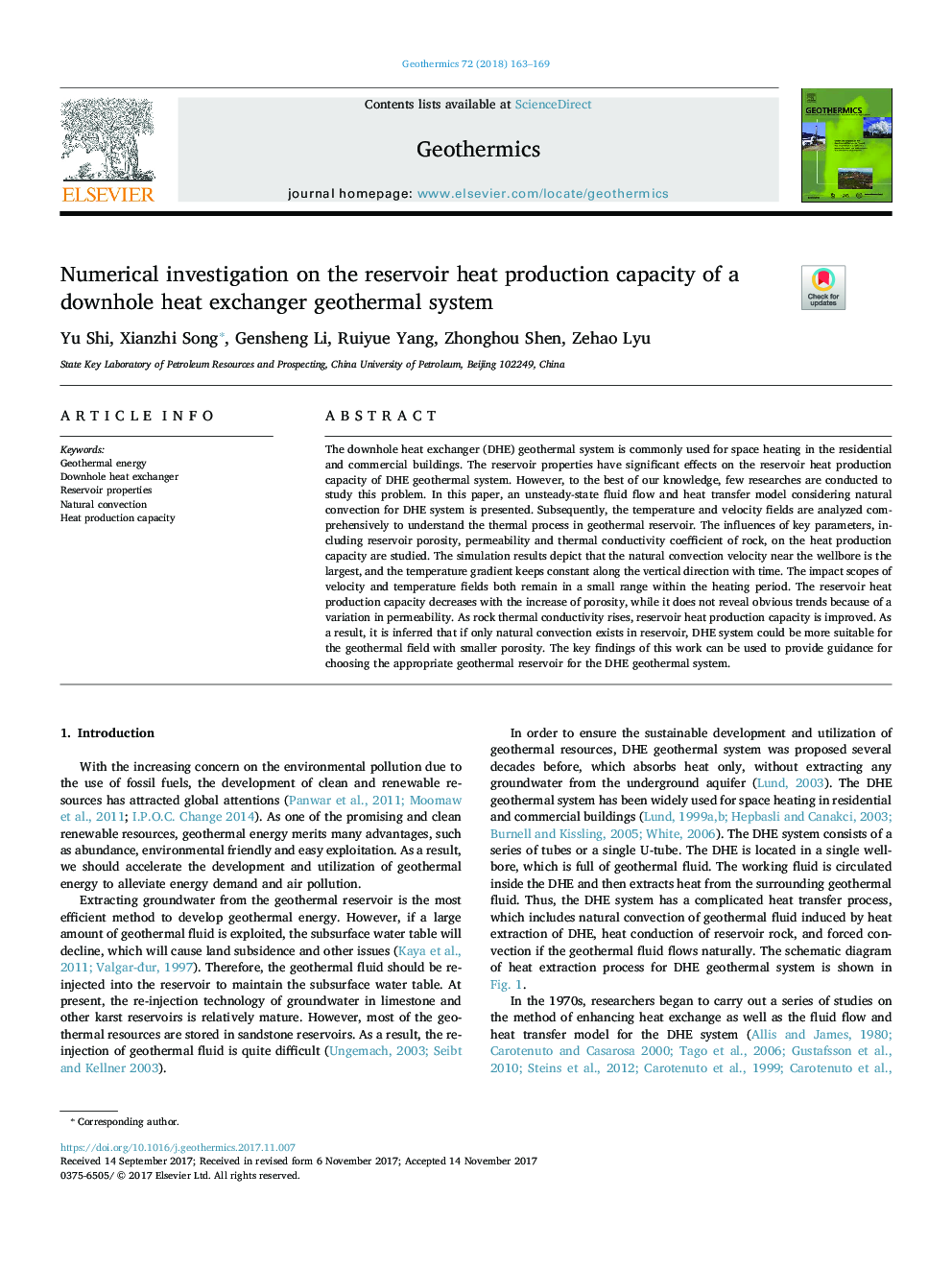| Article ID | Journal | Published Year | Pages | File Type |
|---|---|---|---|---|
| 8088620 | Geothermics | 2018 | 7 Pages |
Abstract
The downhole heat exchanger (DHE) geothermal system is commonly used for space heating in the residential and commercial buildings. The reservoir properties have significant effects on the reservoir heat production capacity of DHE geothermal system. However, to the best of our knowledge, few researches are conducted to study this problem. In this paper, an unsteady-state fluid flow and heat transfer model considering natural convection for DHE system is presented. Subsequently, the temperature and velocity fields are analyzed comprehensively to understand the thermal process in geothermal reservoir. The influences of key parameters, including reservoir porosity, permeability and thermal conductivity coefficient of rock, on the heat production capacity are studied. The simulation results depict that the natural convection velocity near the wellbore is the largest, and the temperature gradient keeps constant along the vertical direction with time. The impact scopes of velocity and temperature fields both remain in a small range within the heating period. The reservoir heat production capacity decreases with the increase of porosity, while it does not reveal obvious trends because of a variation in permeability. As rock thermal conductivity rises, reservoir heat production capacity is improved. As a result, it is inferred that if only natural convection exists in reservoir, DHE system could be more suitable for the geothermal field with smaller porosity. The key findings of this work can be used to provide guidance for choosing the appropriate geothermal reservoir for the DHE geothermal system.
Related Topics
Physical Sciences and Engineering
Earth and Planetary Sciences
Geochemistry and Petrology
Authors
Yu Shi, Xianzhi Song, Gensheng Li, Ruiyue Yang, Zhonghou Shen, Zehao Lyu,
